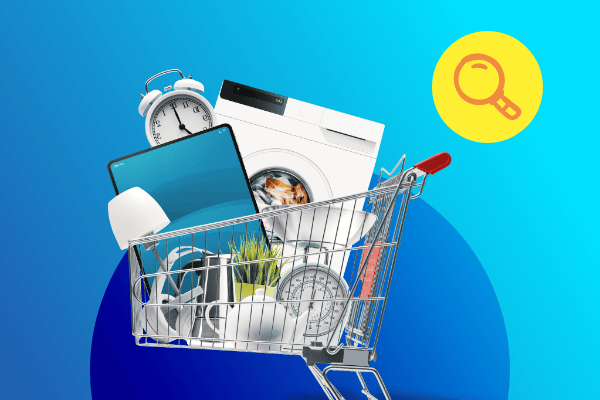Summary
Pinterest is redefining social commerce by focusing not on owning transactions, but on removing barriers to them. With a platform built around discovery, inspiration, and seamless product handoffs, Pinterest social commerce empowers brands through integrations, real-time shopping features, and a user journey that naturally bridges intent and action. As others chase conversion within the app, Pinterest enables it across the ecosystem.
There’s a lot you could say about Pinterest’s approach to commerce—features, formats, partnerships, product plans—but if you only take one thing from this post, let it be this: Pinterest isn’t trying to own the transaction. It’s trying to remove everything that gets in the way of it.
In a landscape where every platform is racing to lock down native checkout and in-app conversion, Pinterest is quietly building a different kind of shopping engine. One that leans into what it does best: inspiration, curation, and discovery. The goal isn’t to close the sale directly inside the app—it’s to create a frictionless handoff to the brands and retailers that can.
If you’re not yet convinced Pinterest deserves a serious place in your commerce strategy, here are three quick facts to anchor that decision:
- Outbound clicks to advertisers more than doubled year over year, according to CEO Bill Ready.
- Over 50% of Pinterest users see the platform as a place to shop.
- A Forbes article called Pinterest “retail’s best-kept social secret.”
And the truth is, most marketers still underestimate Pinterest’s full stack. It’s not just a mood board anymore—it’s a platform that’s quietly built the connective tissue between inspiration and transaction.
Pinterest’s commerce stack: designed for behavior
From day one, Pinterest has been built around Pins—visual building blocks of ideas, inspiration, and intent. They’re how users collect, plan, and dream—and increasingly, they’re how they shop. Pinterest didn’t bolt commerce onto a social feed; it evolved Pins into a product canvas, turning moments of discovery into direct paths to purchase.
Pinterest offers shopping tools that reflect how people browse and plan. Shoppable Product Pins are built off merchant catalogs, showing live pricing and availability. These Pins appear across the home feed, search results, brand profiles, and curated collections. Product tagging lets creators and brands make lifestyle content instantly shoppable, while Pinterest Lens turns real-world images into product recommendations. AR Try-On tools support categories like beauty and home decor, and the Shop tab on business profiles acts like a branded storefront.
Pinterest also supports real-time inventory syncing via catalog integrations with Shopify, Salesforce, Adobe Commerce, and WooCommerce. When Lancôme synced its full catalog, Pinterest became a key holiday driver with measurable ROAS impact.
Pinterest has increasingly become a commerce destination in its own right, and a majority of Pinners say they find brand content genuinely helpful, not intrusive or out of place. That blend of utility and inspiration is rare in the feed-based ecosystem.
“One of the things that I found really compelling about Pinterest is that the user is in that lean-forward mode. More than half the people on Pinterest say they are there to shop,” said CEO Bill Ready, emphasizing the company’s shift toward a low-friction, high-intent commerce experience.
The impressive evolution of Pinterest’s advertising strategies showcases a keen understanding of user intent and behavior. By prioritizing the seamless integration of ad formats that enhance, rather than disrupt, the user experience, Pinterest empowers brands to engage effectively with consumers. The success of Shopping Ads, Catalog Sales campaigns, and innovative formats like Quiz Ads highlights the platform’s commitment to facilitating personalized shopping experiences.
With the backing of data-driven solutions like Performance+, businesses not only achieve higher conversion rates but also experience considerable cost savings, as demonstrated by Sweaty Betty’s success. As Pinterest continues to refine its ad solutions, brands can look forward to leveraging this platform for impactful results that align perfectly with their marketing goals.
Measurement and attribution
Pinterest’s measurement stack is built to prove value across both online and offline actions. The Pinterest Tag and Conversion API allow for server-side and browser-side conversion tracking. This dual setup helps brands capture conversions more accurately and reliably across web and mobile.
According to the Pinterest Blog, “Pinterest advertisers using conversion insights saw a 28% increase in ROAS.” This emphasis on closed-loop measurement has made Pinterest a compelling option for performance-driven marketers seeking provable outcomes.
Marketers can run conversion lift studies, plug into MTA or MMM tools, and work with clean room integrations for closed-loop reporting. Michaels saw a 120% lift in foot traffic tied to a Pinterest campaign. These capabilities allow advertisers to connect Pinterest exposure with in-store behavior and true incremental impact.
Merchants using its measurement suite see 28% higher ROAS compared to those who don’t. The improved attribution precision and depth give brands the confidence to scale their investment on the platform.
Pinterest’s measurement ecosystem is built to tie inspiration to action and prove business impact at every step of the customer journey.
Creator commerce
Pinterest has evolved from a static inspiration board into a dynamic platform where creators play a central role in driving commerce. Unlike other platforms where content quickly fades, Pinterest’s evergreen format helps creators build long-term value from each post they publish.
Pinterest enables creators to tag products, use affiliate links, and disclose paid partnerships. As TechCrunch put it, “We want to make it easy for creators to get paid for their inspiring content.” These tools make Pinterest an appealing hub for creators looking to monetize authentically while maintaining trust with their audiences.
The focus has shifted from Creator Rewards to scalable monetization tools. This evolution reflects Pinterest’s goal to support consistent, long-term income streams for creators rather than one-off bonuses.
Top creators use their profiles as storefronts, and evergreen content ensures that shoppable Pins continue to perform. With the right optimization, creators can build lasting conversion funnels from just a few high-quality pieces of content. According to TechCrunch, creators can earn commissions through affiliate links from Amazon, Rakuten, and ShopStyle.
Pinterest’s model supports creators in building a sustainable commerce strategy where content stays relevant, useful, and profitable over time.
Live and event-based shopping
Pinterest is bridging the gap between inspiration and transaction through shoppable events and livestreams. These experiences tap into Pinterest’s unique strength—intentional discovery—by meeting people right at the moment they’re looking to act.
Pinterest TV offers real-time shoppable content from creators and brands. Events like “Shop the Holidays” featured limited-time deals and livestream demos. As Retail TouchPoints noted, “Pinterest is blurring the lines between print and digital shopping experiences.” These real-time activations give shoppers a reason to engage in the moment while discovering new products.
Pinterest also created a shoppable issue with Real Simple, letting users shop print pages via Pinterest codes. This integration of media and commerce opens up new channels for engagement and drives cross-platform reach.
70% of users say Pinterest content inspires real-world action, and live shopping pilots have driven up to 40% higher engagement. These formats give users a deeper, more interactive path to product discovery and decision-making.
Live shopping and event-based formats are unlocking new ways to drive high-intent conversions, especially during seasonal campaigns and retail moments that benefit from added context or demonstration
Strategic partnerships
Pinterest’s evolving partner network is central to its strategy to reduce friction between discovery and purchase. Rather than building a closed ecosystem, the platform is investing in integrations and partnerships that scale reach, simplify checkout, and boost monetization—both for itself and for the brands it supports. These moves position Pinterest not as a storefront, but as the connective layer between inspiration and fulfillment.
Pinterest’s Amazon partnership allows users to buy Amazon products without leaving Pinterest. Real-time pricing, Prime tags, and delivery estimates are shown natively. This collaboration streamlines the shopping experience and positions Pinterest as a high-intent discovery engine for Amazon inventory.
The platform is also integrated with Shopify, WooCommerce, Adobe Commerce, and Salesforce. These integrations enable real-time product syncing, dynamic pricing updates, and scalable catalog uploads for a wide range of merchants.
In early 2024, Pinterest signed an ad deal with Google to expand third-party ad demand. This partnership aims to diversify Pinterest’s monetization model and bring more competitive bidding to the platform’s ad ecosystem.
Together, these partnerships are building the infrastructure Pinterest needs to become a true shopping utility—one that blends discovery, intent, and fulfillment across a broad commerce ecosystem.
Roadmap signals: where it’s going
Pinterest’s forward-looking product roadmap centers on one idea: making inspiration instantly actionable. To do that, the company is investing in tools that bring together personalization, utility, and visual exploration—all tailored to the high-intent mindset of its users.
Pinterest is leaning into AI-powered features like Collages, which allow users to visually combine products and ideas in interactive, mood-board-like formats. These tools aim to make planning and discovery more immersive, and signal a deeper shift toward user-driven customization.
Deeper personalization and expanded catalog coverage are also on the table. As Pinterest continues to improve its recommendation systems, it’s becoming better at surfacing relevant content and products in real time—especially during key seasonal moments.
Executives have hinted at additional checkout partnerships beyond Amazon and are exploring more advanced in-store attribution capabilities. The company is also positioning itself to tap into retail media budgets with new performance-focused ad solutions.
Pinterest’s global user base now nears 500 million monthly active users, and international expansion remains a key pillar. As TechCrunch reported, Pinterest is aiming to be “your personal sandbox for exploration, refinement, and visualization”—a platform for not just ideas, but decisions.
According to Jomfruland, Pinterest’s Q4 2024 revenue jumped 23%, driven largely by shopping-focused features. That momentum reinforces its evolving role as both a discovery platform and a measurable driver of commerce.
Final thought: Pinterest is a partner to your commerce program
Pinterest isn’t a cart. It’s a catalyst.
It’s not trying to dominate the checkout—it’s trying to make it feel inevitable.
For marketers, that makes it a different kind of player in the social commerce space: one that thrives not by closing the loop, but by unblocking it.
And that shift—from owning the transaction to enabling it—might be exactly what gives Pinterest its staying power. As competitors lean hard into control and conversion, Pinterest is quietly building the connective tissue that actually moves people from idea to action. With a commerce stack built around how people plan, partnerships that open new doors for fulfillment, and a roadmap shaped by utility—not vanity—it’s positioned as a long-game platform.
In a space where trends change overnight, Pinterest is playing a slower, smarter game. It’s not just ready for where commerce is going—it’s helping define it.







